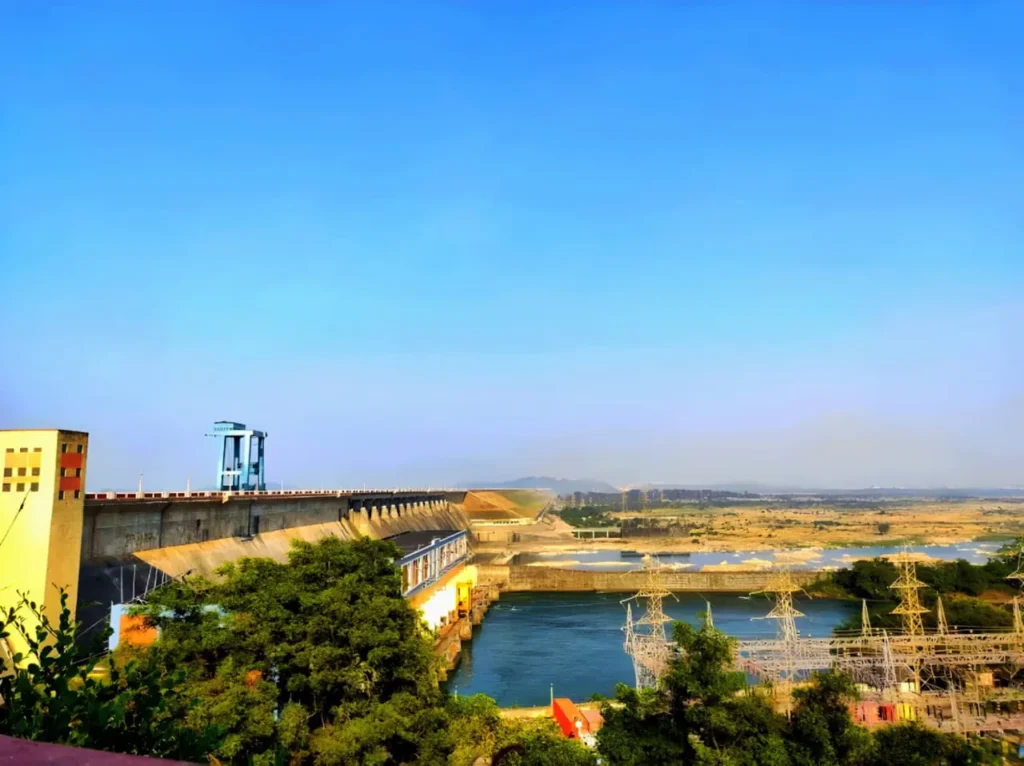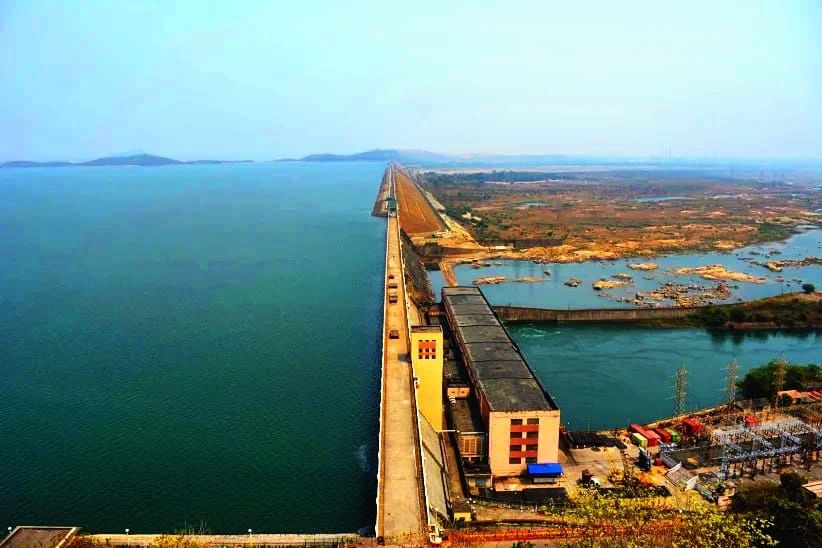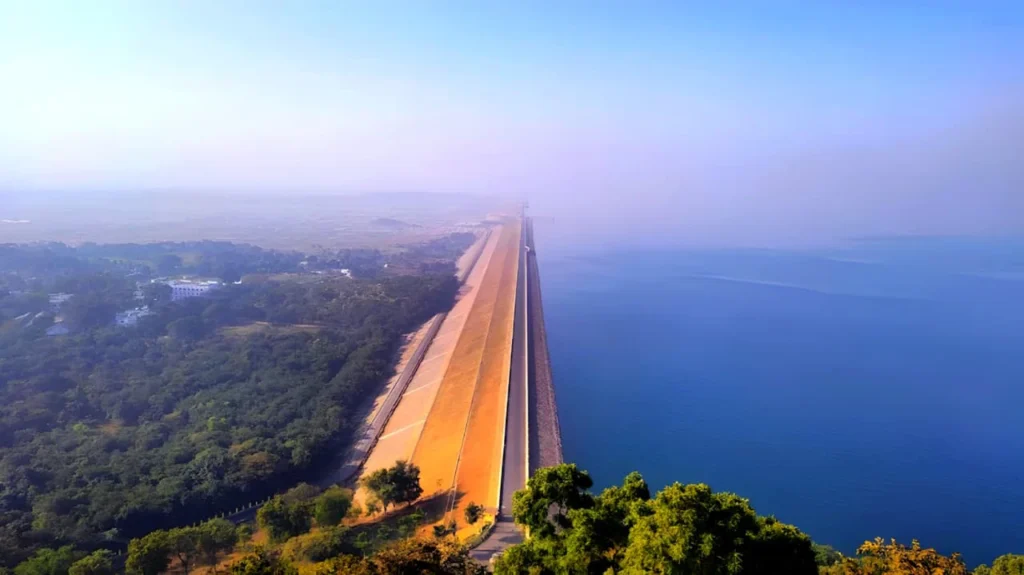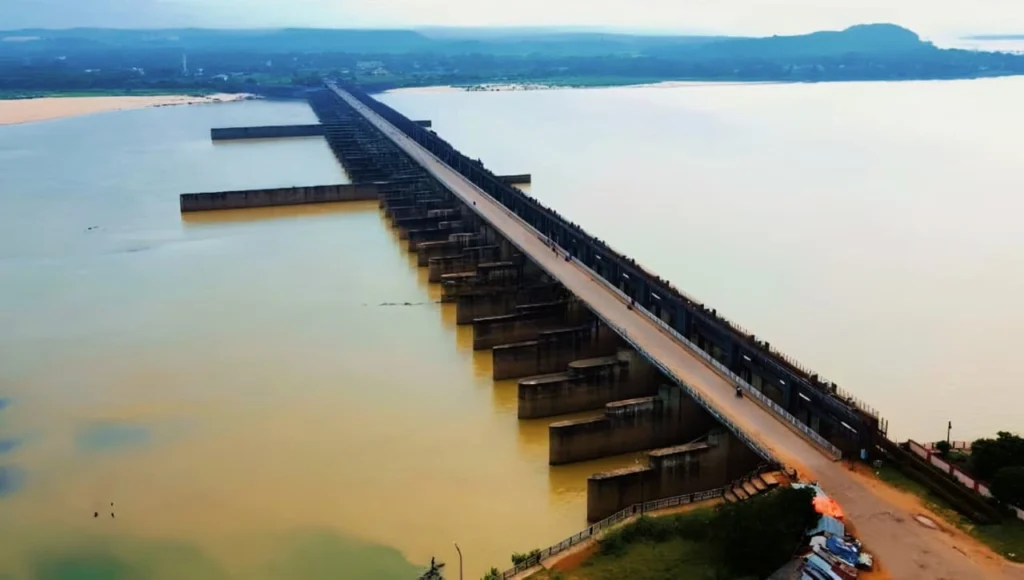
Table of Contents
What is Hirakud Dam? A Brief Overview
Located near Sambalpur in western Odisha, Hirakud Dam is one of the longest earthen dams in the world, stretching 25.79 km. It was officially inaugurated in 1957 and, since then, has stood as a testament to India’s post-independence development.
Built across the mighty Mahanadi River, Hirakud Dam forms the Hirakud Reservoir, which spans up to 700 km² at full capacity. Importantly, this project was India’s first multipurpose river valley project and continues to serve crucial roles, including:
- Flood control across the Mahanadi Delta
- Irrigation for over 4.6 lakh hectares
- Hydropower generation of around 300 MW
- Fishing and livelihood support for thousands of families
- Tourism and cultural heritage
The Story Behind Hirakud: From Floods to Foundation

The roots of Hirakud go back to the 1850s when flood control in the Mahanadi Delta became an urgent need. After several studies and committees—including the famous intervention by Sir M. Visvesvaraya in 1937—the idea of a multipurpose dam was solidified.
Eventually, Pandit Jawaharlal Nehru laid the first concrete in 1948, and the dam became operational by 1953, with formal inauguration in 1957. Despite local opposition at the time due to displacement, the dam stood as a symbol of India’s will to rise.Hydrological Powerhouse: How Hirakud Works
- To start with, the Full Reservoir Level (FRL): 192.02 meters
- Additionally, the Flood Protection Capacity: Regulates floodwater at Naraj, saving the delta from destruction
- Furthermore, the Hydropower Stations:
- Burla Powerhouse – 260 MW
- Chiplima Powerhouse – 72 MW
- As a result, the Annual Production reaches ~740 million units
- Moreover, the Dam supports Irrigation:
- Bargarh Main Canal (134,000 ha)
- Sasan Main Canal (21,000 ha)
- Sambalpur Distributary (4,100 ha)
Ecological Significance: More Than Just a Dam
Biodiversity Hotspot
- During winter, it becomes a home for migratory birds like ducks, geese, and waders
- In addition, it provides a habitat for several fish species—supporting over 7,000 fishing households
- Moreover, islands like Bhulka Dungri and Sulka Dungri serve as breeding and resting grounds
Wetland Dynamics
- During monsoons, the reservoir stretches up to 689 km²
- In summer, it shrinks to 200 km², revealing floodplains and marshes ideal for cultivation and grazing
- Ecological zones include riverine, transitional, and lacustrine sections—each supporting different flora and fauna
Challenges and Conservation: The Need for Wise Use
Although Hirakud makes a massive contribution, it now faces several serious concerns:
- To begin with, siltation reduces storage capacity and weakens flood protection
- Moreover, upstream industries cause water pollution
- In addition, fish species show a steady decline in diversity
- Furthermore, urban and industrial expansion increases pressure on the region
- First, it conserves the catchment area
- Second, it monitors water quality
- Third, it promotes ecotourism
- Finally, it engages the community in decision-making
Why Visit Hirakud Dam?

- Jawahar Minar & Gandhi Minar: To begin with, they offer a panoramic view of the reservoir
- Debrigarh Wildlife Sanctuary: Additionally, it lies nearby and attracts nature lovers
- Sunset Views: Moreover, the serene waterbody surrounded by hills offers perfect photo ops
- Boating & Fishing: Meanwhile, authorities regulate these activities in certain areas for tourists
People Also Ask (FAQs)
1. Where is Hirakud Dam located?
It is located near Sambalpur in Odisha, India, about 15 km upstream of the city on the Mahanadi River.
2. What is Hirakud Dam famous for?
It’s the longest earthen dam in the world and was India’s first post-independence multipurpose river project.
3. Which river is Hirakud Dam built on?
It is built across the Mahanadi River.
4. Is Hirakud Dam good for tourism?
Yes! It is a popular spot for sunset views, birdwatching, and eco-tourism. You can also explore nearby wildlife sanctuaries.
5. What is the ecological significance of Hirakud Dam?
The dam creates a large reservoir that acts as a wetland, supporting diverse aquatic life, birds, and helps in flood control and water storage.
If you're planning to explore Odisha or wish to learn about India's engineering and ecological marvels, add it to your bucket list. And if you're a student, researcher, or policy enthusiast, dive deeper into how integrated wetland management can ensure a sustainable future for such ecosystems.
💬 Share this blog with others who might find this fascinating, and drop your thoughts in the comments—What surprised you most about Hirakud?


